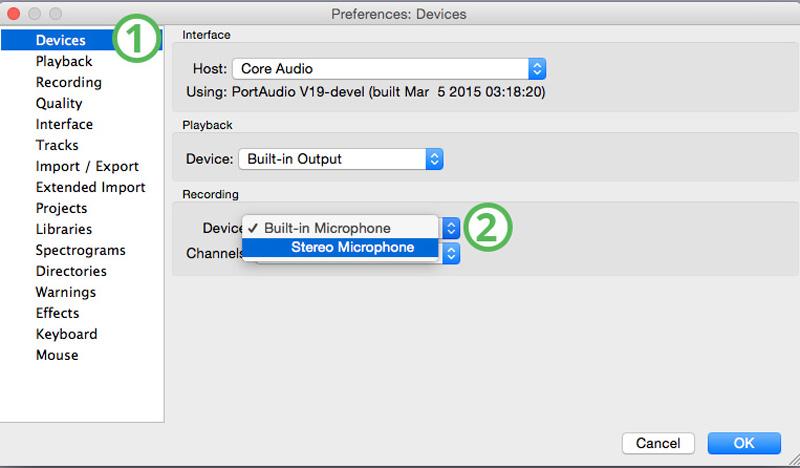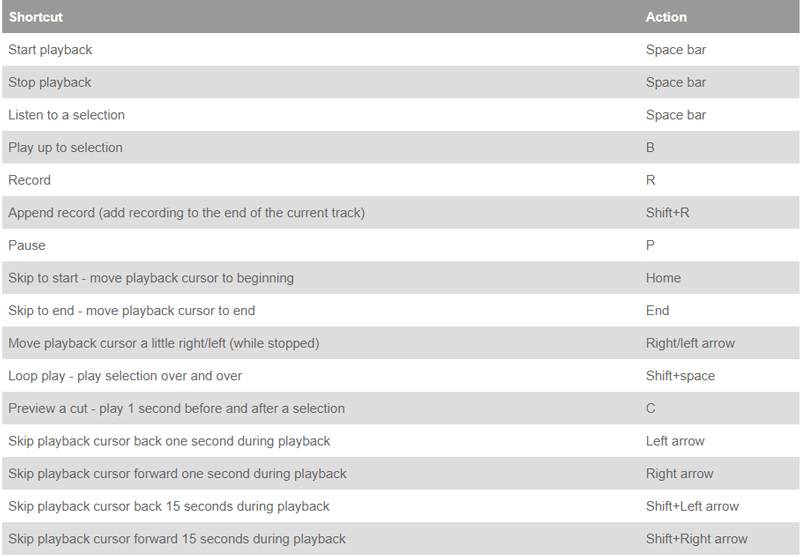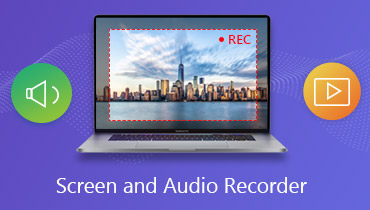Detailed Guide about Audacity Record Computer Audio (2024 Updated)
While the daily usage of your computer, you will frequently have the need to capture audio. For instance, you may want to record online lectures, broadcast, voice chat, video game background music, or favorite songs. So it’s quite necessary to find a good audio recorder to capture sound from computer microphone/speaker.
Audacity is a free audio editor and recorder. This multi-track recording software enables you to record audio on Windows, Mac, Linux and other operating systems with ease. So when you want to record computer audio, Audacity can be a great choice.

Here is a detailed guide on how Audacity record computer audio. Whether you are using a Windows 10/8/7 PC or Mac, you can find the specific quick tutorial below to capture any sound on your computer.
Best Audacity Alternative - Screen Recorder
- Easily record any audio on Mac/Windows PC with high sound quality.
- Record computer audio from system audio card and microphone/speaker.
- Capture computer screen/webcam, record audio and take screenshots.
- Record online videos, 2D/3D gameplay, webcam, video/audio chats, music and more.
- Powerful editing features to better edit captured video and audio file.

Part 1. Audacity Record Computer Audio on Windows 10 PC
Audacity is a free and multi-track audio recorder which can help you record computer audio with high sound quality. This free audio recorder allows you to capture any audio on your computer and then save it in AC3, M4A/M4R (AAC), WMA or other formats based on your need. It also carries some basic editing functions like Cut, Copy, Splice and Mix Sounds Together. This part will show you how to record computer audio with Audacity in Windows 10.
Step 1. Download Audacity for Windows. First, you need to go to Audacity official site (https://www.audacityteam.org/) to free download Audacity for Windows on your computer. After downloading, you can follow the on-screen instructions to install and run this free audio recorder.
Step 2. Make sure Windows can recognize microphone. Before recording computer audio, you need to check the playback device and ensure Windows can recognize the microphone. Right-click on the sound or volume icon on the bottom-right corner. Then choose your microphone under audio input devices. During this step, you can also adjust audio input properties to improve the sound quality.
Step 3. Set Audacity to recognize microphone. Then you need to make sure Audacity is set up to recognize your computer microphone. Click the “Edit” option on the menu bar and then choose “Preferences”.
Click on “Devices” from the left menu and then choose “Windows WASAPI” from the drop-down menu. Here you can choose the default device that has been enabled in your sound device settings. For capturing computer audio, you need to ensure the default playback device “Speakers” or “Headphones” is selected, and leave the channel set for 2 Channels. Click “OK” to confirm the operation.
Step 4. Record computer audio. After all these settings, you can start to record computer audio with Audacity. This is a concise toolbar designed in this free audio recorder to give you full control of the audio recording. You can click the “Record” button to start recording computer audio in Audacity. When the audio recording is over, you can click “Stop” button.

Step 5. Preview and save captured audio. Audacity is equipped with many editing features. So after the audio recording, you can edit the captured audio file. If you want to add some sound effects to the recorded audio, you can use the “Effect” feature and then apply the specific effect to it.

When you are satisfied with the audio, you can save it on your computer. Click the “File” option on the menu bar and then choose the “Save Project As” from the drop-down list.

Here you can also click “Export” and then select your preferred output audio format like MP3, WAV, or OGG.

Audacity is an all-featured audio recording tool which can help you capture live audio through a microphone or mixer. It highly supports 16-bit, 24-bit and 32-bit. What’s more, it offers many editing features and effects to better edit the captured audio and export it in popular audio format. But you have to admit that, Audacity is a little bit difficult for new users to record computer audio.
Part 2. How to Record Computer Audio with Audacity on Mac
If you are a Mac user, you can navigate to the official site of Audacity and download the Mac version of this audio recorder. After that, you can take the following guide to record Mac computer audio in Audacity.
Step 1. Set Mac sound settings. First, you need to install Audacity on your Mac. Then click “Apple” icon on the menu bar and choose “System Preferences” option. Click the “Sound” icon and then click “Input” tab. Select the “microphone” option from the available options.

Step 2. Set Audacity to recognize microphone. Run Audacity on your Mac. Click “Audacity” in the main menu then choose “Preferences” option from the drop-down list.

Click “Devices” on the left and then ensure that the selected microphone is set for your Mac microphone.

Step 3. Record Mac computer audio. After all these settings, you can start to capture audio on your Mac. You can play the audio you want to record and then click on the “record” button to begin the sound recording. Click the “stop” button to stop the recording.

After the audio recording on computer, you can click the “play” button to listen to the audio file you just created. It will play the captured audio through your computer's speakers or headphones.
Step 4. Add sound effects. If you want to apply some sound effects to the captured audio, you can use the “Effect” feature. As you can see, this free audio recorder for Mac provides you with many effect options. You can click “Effect” option and then select specific effect you like from the drop-down list.

Step 5. Edit the recorded audio. As a full-featured audio recorder and editor, Audacity carries many basic and frequently-used editing features like Cut, Delete, Duplicate, Copy and more. If you have the need to edit audio, here you can click Edit and then use the editing function according to your need.

Note: Considering that the operations and changes you made in Audacity are irreversible, you’d better save a copy of the captured audio file before editing or adding any effects.
Step 6. Export the captured audio. When you are satisfied with the captured audio, you can click “File” and then choose “Export Audio” or “Export Selected Audio” option to save it on your Mac. Here you can choose to export it as the MP3 file.
To quickly record computer audio in Audacity, you can use the keyboard shortcuts. When you view the captured audio on Mac, you can also use the following shortcuts to get full control of the process.

The powerful Audacity is designed with many useful recording and editing features. You can try them one by one while or after the recording. You need to practice more to use Audacity for recording a high-quality audio on computer.
Conclusion
Here in this post, we have mainly talked about how to record computer audio in Audacity. As a free and powerful audio recorder and editor, Audacity can help you capture audio on your Windows 10/8/7 PC or Mac with high quality.
However, many new Audacity users don’t know how to set various audio settings on computer. You can follow the detailed steps shared above to capture sound from computer microphone or speaker with Audacity. If you still can’t use it properly, you can try the recommended Screen Recorder.

Compared with Audacity, it can offer you an easier audio recording experience. It has the capability to capture audio from both microphone/speaker and system audio card. What’s more, it enables you to record videos with exactly the original image and sound quality. Just free download it and have a try.

